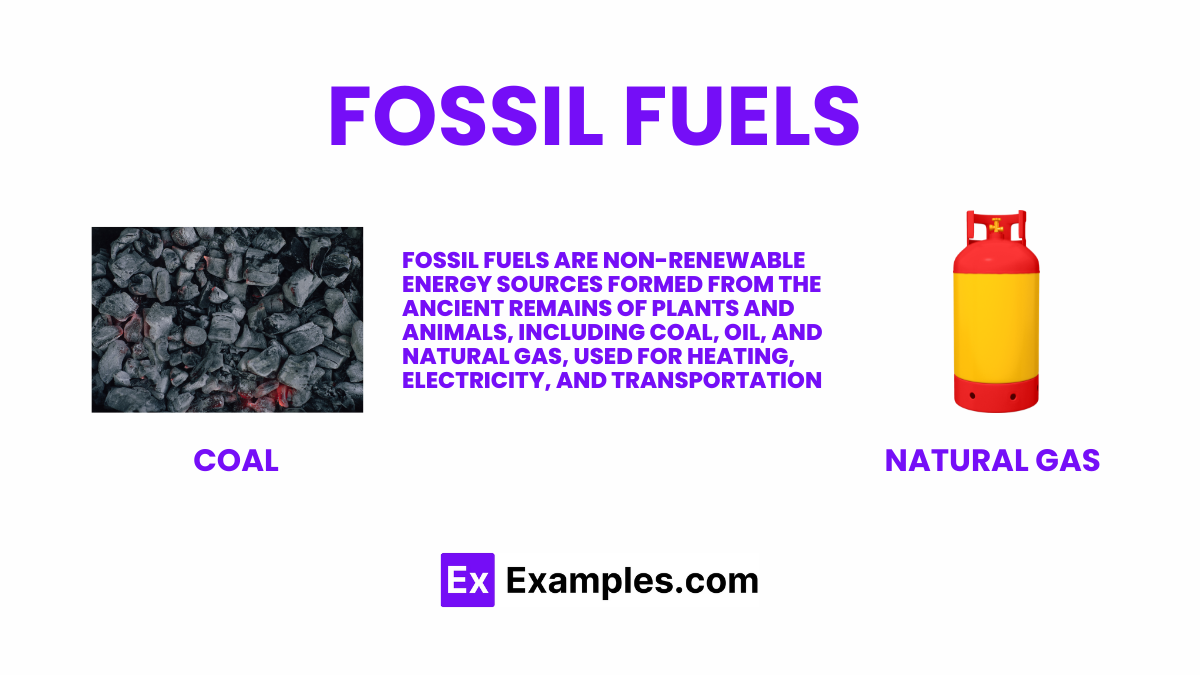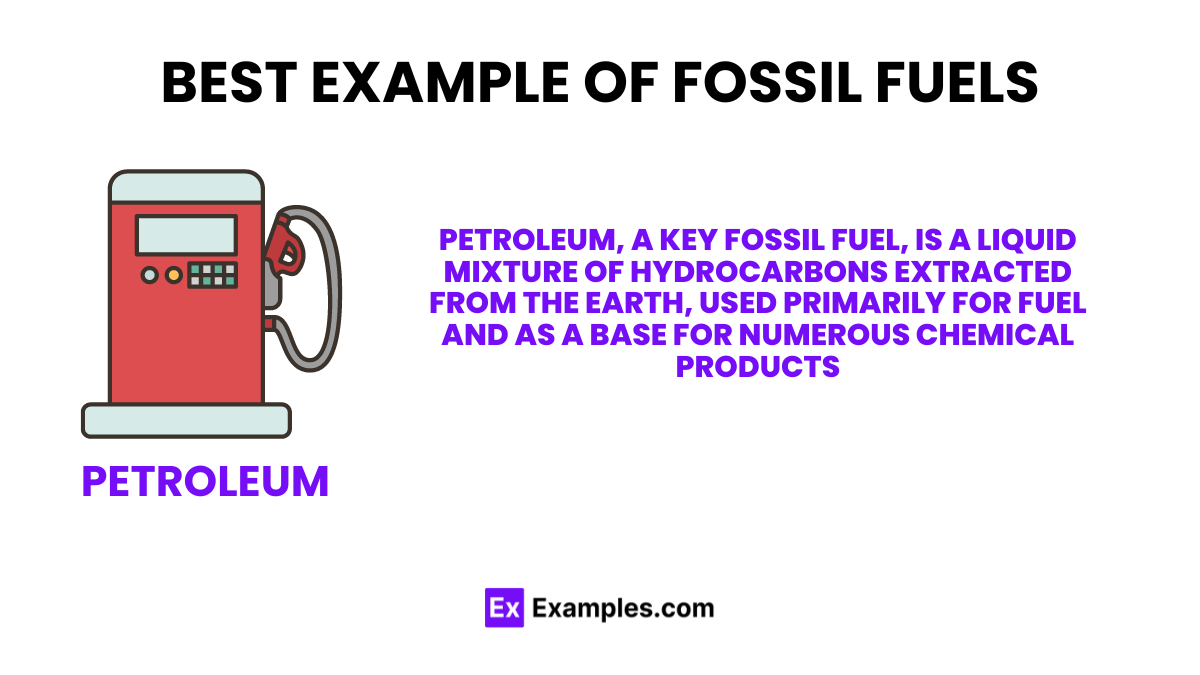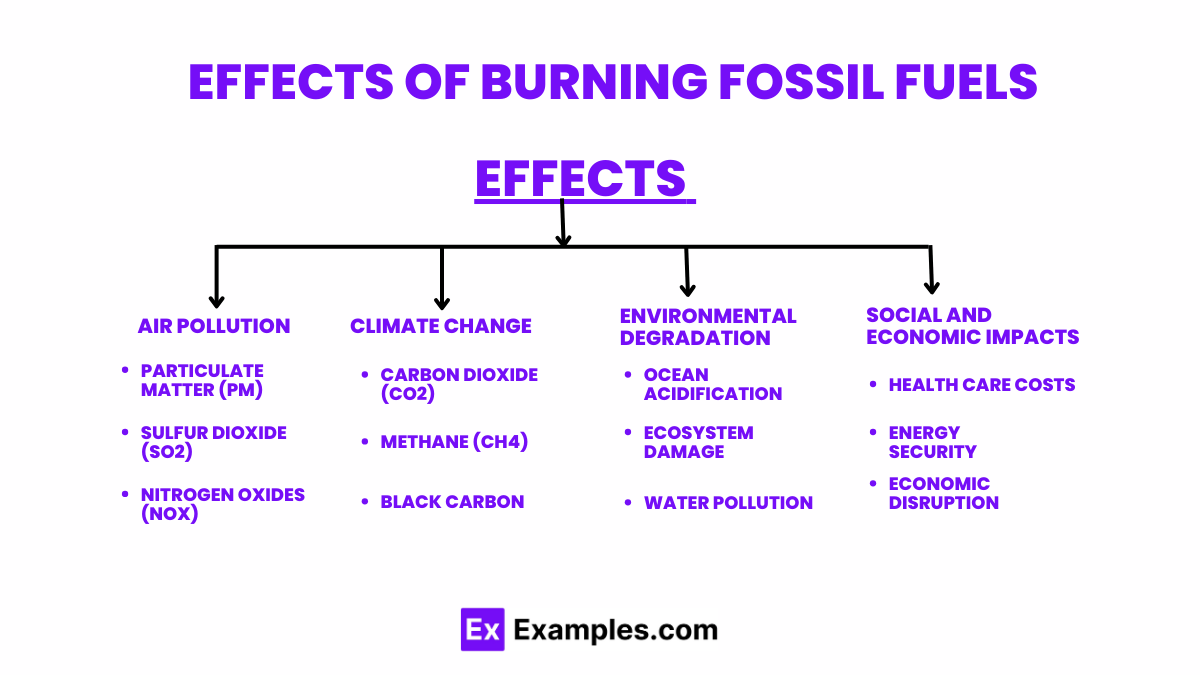Fossil Fuels
Embark on a journey through the compelling world of fossil fuels, the bedrock of modern civilization. Fossil fuels, including coal, oil, and natural gas, have powered human progress for centuries, driving industrial advancements, shaping economies, and fueling the daily lives of billions. This guide unveils the origins, extraction methods, and pivotal role of these energy titans, alongside their environmental impacts and the global quest for sustainable alternatives. Dive into the essence of energy that illuminates our world and propels humanity forward.
What are Fossil Fuels?
Fossil fuels are natural sources of energy formed from the remains of living organisms that lived millions of years ago. Over time, heat and pressure transformed these remains into coal, oil, and natural gas. These fuels are called “fossil” fuels because they are derived from ancient fossils. They are extracted from the Earth and used to produce energy for heating, transportation, electricity generation, and various industrial processes. Fossil fuels are a major source of energy worldwide but burning them releases carbon dioxide, a greenhouse gas that contributes to climate change.
The Best Example of Fossil Fuels: Petroleum (Oil)
Among fossil fuels, petroleum, commonly referred to as oil, stands out as a prime example due to its versatility, widespread use, and significant impact on the global economy. Petroleum is a liquid mixture of hydrocarbons that is present in certain rock strata and extracted to produce fuels, including gasoline, diesel, and jet fuel, as well as heating oil and kerosene.
Why Petroleum?
Versatility: Petroleum is not only used for fuel but also as a raw material for various products such as plastics, synthetic fibers, pharmaceuticals, and cosmetics. This wide range of applications makes it an integral part of daily life and various industries worldwide.
Energy Density: Oil has a high energy density, meaning it provides a significant amount of energy per unit volume. This makes it an efficient source of fuel for transportation, heating, and electricity generation.
Global Trade: Petroleum is a major commodity in international trade, with its prices influencing the global economy. Countries that produce and export oil have significant geopolitical influence, while oil-importing countries often face economic challenges due to fluctuating oil prices.
Extraction and Refining: Advanced technologies allow for the extraction of petroleum from challenging environments, including offshore drilling and tar sands. After extraction, oil is refined into various products, each with specific uses, showcasing the complexity and sophistication of the petroleum industry.
Advantages and Disadvantages of Fossil Fuels
Fossil fuels, including coal, oil, and natural gas, have been the cornerstone of global energy supply due to their unique characteristics. However, their use also brings significant drawbacks, particularly concerning environmental impact and sustainability.
Advantages
- High Energy Density: Fossil fuels contain a high amount of energy per unit volume, making them highly efficient sources of power for electricity generation, heating, and transportation.
- Reliability: Fossil fuel-based power plants can provide a constant, stable source of electricity that is not dependent on weather conditions, unlike some renewable energy sources.
- Infrastructure and Technology: There is a well-established infrastructure for extracting, transporting, refining, and utilizing fossil fuels, supported by decades of technological advancements.
- Economic Development: The fossil fuel industry is a significant source of employment and revenue, driving economic growth in many regions and countries around the world.
Disadvantages
- Environmental Pollution: Burning fossil fuels releases pollutants such as sulfur dioxide, nitrogen oxides, and particulate matter, which contribute to air pollution and respiratory health issues.
- Greenhouse Gas Emissions: The combustion of fossil fuels is a major source of carbon dioxide (CO2), a greenhouse gas that contributes to global warming and climate change.
- Finite Resource: Fossil fuels are non-renewable resources that take millions of years to form. Continuous extraction and consumption lead to depletion, making them unsustainable in the long term.
- Oil Spills and Accidents: The extraction, transportation, and processing of fossil fuels can lead to environmental disasters like oil spills, which have devastating effects on marine ecosystems and wildlife.
- Economic Volatility: The global fossil fuel market is subject to price fluctuations due to political instability, changes in demand, and other factors, leading to economic uncertainty.
- Dependency and Geopolitical Tensions: Reliance on fossil fuels can create dependencies between importing and exporting countries, sometimes resulting in geopolitical tensions and conflicts.
Types, Formation and Uses of Fossil Fuels
Fossil fuels, the mainstay of global energy for centuries, are derived from the decomposed remains of ancient plants and animals, subjected to heat and pressure over millions of years beneath the Earth’s surface. They come in three primary forms: coal, oil, and natural gas, each with distinct formation processes and uses.
Types and Formation
- Coal
- Formation: Coal forms from the remains of ancient vegetation, primarily ferns, trees, and other plant material that existed in swamps millions of years ago. Over time, layers of plant matter were buried under water and dirt, where the absence of oxygen prevented decay. Heat and pressure then transformed this material into coal.
- Types: Coal is categorized by its carbon content, with anthracite being the highest grade, followed by bituminous, sub-bituminous, and lignite.
- Oil (Petroleum)
- Formation: Petroleum forms from tiny marine organisms, such as algae and plankton, that settled in the ocean’s bottom millions of years ago. Covered by layers of sediment, these organic materials were subjected to heat and pressure, transforming into oil over time.
- Types: Crude oil varies in thickness and color, from light and thin to heavy and thick, classified by its sulfur content and API gravity.
- Natural Gas
- Formation: Like oil, natural gas forms from the remains of marine organisms. However, under certain conditions, the organic material transforms into gas instead of oil. It is often found in conjunction with oil fields but can also exist in large gas formations.
- Types: Natural gas is primarily methane, with varying amounts of other gases such as ethane, propane, and butane.
Uses
- Coal
- Historically used in steam engines and to heat buildings, coal remains a significant source of electricity generation worldwide. It is also used in the production of steel and cement.
- Oil (Petroleum)
- Petroleum is refined into various products, including gasoline, diesel, jet fuel, heating oil, and kerosene. Beyond fuel, petroleum derivatives are used to make plastics, synthetic fabrics, pharmaceuticals, and a wide range of chemicals.
- Natural Gas
- Used for heating, cooking, and electricity generation, natural gas is also a key feedstock for the production of fertilizers, chemicals, and hydrogen. With lower CO2 emissions compared to coal and oil, it’s often touted as a “bridge” fuel in the transition to renewable energy.
Effects of Burning Fossil Fuels
Burning fossil fuels, including coal, oil, and natural gas, is a primary source of energy production worldwide. However, this process releases a variety of pollutants and greenhouse gases into the atmosphere, leading to significant environmental and health impacts.
Air Pollution
- Particulate Matter (PM): Combustion produces fine particles that can penetrate deep into the lungs and bloodstream, causing respiratory and cardiovascular diseases.
- Sulfur Dioxide (SO2): Primarily from burning coal and oil, SO2 contributes to acid rain, which can harm ecosystems, damage buildings, and contaminate water sources.
- Nitrogen Oxides (NOx): These gases contribute to the formation of ground-level ozone (smog), leading to respiratory problems, and can also result in acid rain.
- Volatile Organic Compounds (VOCs): VOCs are a key component in the formation of smog, which has been linked to respiratory issues and other health problems.
Climate Change
- Carbon Dioxide (CO2): The primary greenhouse gas emitted from burning fossil fuels. CO2 accumulates in the atmosphere, trapping heat and leading to global warming and climate change.
- Methane (CH4): While less abundant, methane is released during oil and natural gas extraction. It is far more potent than CO2 in trapping heat in the atmosphere, contributing significantly to global warming.
- Black Carbon: Produced from incomplete combustion of fossil fuels, black carbon is a component of particulate matter that can absorb sunlight and contribute to warming the atmosphere.
Environmental Degradation
- Ocean Acidification: CO2 absorbed by the oceans increases their acidity, affecting marine life, particularly organisms with calcium carbonate shells or skeletons.
- Ecosystem Damage: Acid rain and higher ground-level ozone can damage forests and agricultural lands, reducing biodiversity and crop yields.
- Water Pollution: The extraction and refining processes associated with fossil fuels can lead to water contamination, affecting both wildlife and human water sources.
Social and Economic Impacts
- Health Care Costs: The health issues associated with air pollution from burning fossil fuels lead to increased healthcare costs and productivity losses.
- Energy Security: Reliance on fossil fuels can lead to geopolitical tensions and energy security concerns, as resources are unevenly distributed across the globe.
- Economic Disruption: Extreme weather events exacerbated by climate change can cause significant economic disruption, damaging infrastructure, agriculture, and livelihoods.
Effects of Fossil Fuels: Facts
The use of fossil fuels—coal, oil, and natural gas—has been instrumental in powering economic development and industrialization around the world. However, their extraction, processing, and combustion have significant environmental and health consequences. Here are some key facts highlighting the effects of fossil fuels.
Environmental Impact
- Climate Change: The combustion of fossil fuels is the largest source of carbon dioxide (CO2) emissions, contributing to about 75% of total greenhouse gas emissions and playing a significant role in global warming and climate change.
- Air Pollution: Burning fossil fuels releases a variety of harmful pollutants, including particulate matter, nitrogen oxides, sulfur dioxide, and volatile organic compounds, leading to smog, acid rain, and respiratory illnesses.
- Water Pollution: Oil spills, coal mining, and natural gas extraction can contaminate water bodies, affecting marine ecosystems, wildlife, and drinking water supplies.
- Habitat Destruction: The extraction of fossil fuels often leads to habitat destruction, biodiversity loss, and soil erosion. For instance, mountaintop removal mining and oil sands extraction are particularly destructive to the environment.
Health Effects
- Respiratory and Cardiovascular Diseases: Exposure to air pollutants from fossil fuel combustion is linked to an increased risk of respiratory diseases (like asthma and bronchitis) and cardiovascular diseases.
- Cancer: Certain chemicals released in the process of burning fossil fuels, such as benzene and formaldehyde, are known carcinogens.
- Premature Deaths: Air pollution from fossil fuels is responsible for millions of premature deaths worldwide each year, according to studies by health organizations.
Economic and Social Impact
- Economic Costs: Health care costs related to air pollution and environmental degradation significantly impact economies. Additionally, the volatile prices of fossil fuels can lead to economic instability.
- Energy Security: Dependency on fossil fuels, especially for countries that rely heavily on imports, can lead to geopolitical tensions and energy security concerns.
- Climate Injustice: The effects of climate change disproportionately affect the poorest and most vulnerable communities around the world, despite their minimal contribution to greenhouse gas emissions.
Global Warming Potential
- Methane Emissions: Methane, a potent greenhouse gas released during the production and transport of coal, oil, and natural gas, has a global warming potential more than 25 times greater than that of CO2 over a 100-year period.
- Feedback Loops: The melting of polar ice caps and permafrost due to global warming releases more greenhouse gases, such as methane, creating feedback loops that further accelerate climate change.
Fossil fuels have powered human advancement for centuries, driving economic growth and facilitating modern conveniences. However, their environmental and health impacts, including air pollution and climate change, underscore the urgent need for sustainable alternatives. Transitioning to renewable energy sources is imperative to mitigate these effects, ensuring a cleaner, healthier, and more sustainable future for generations to come.





